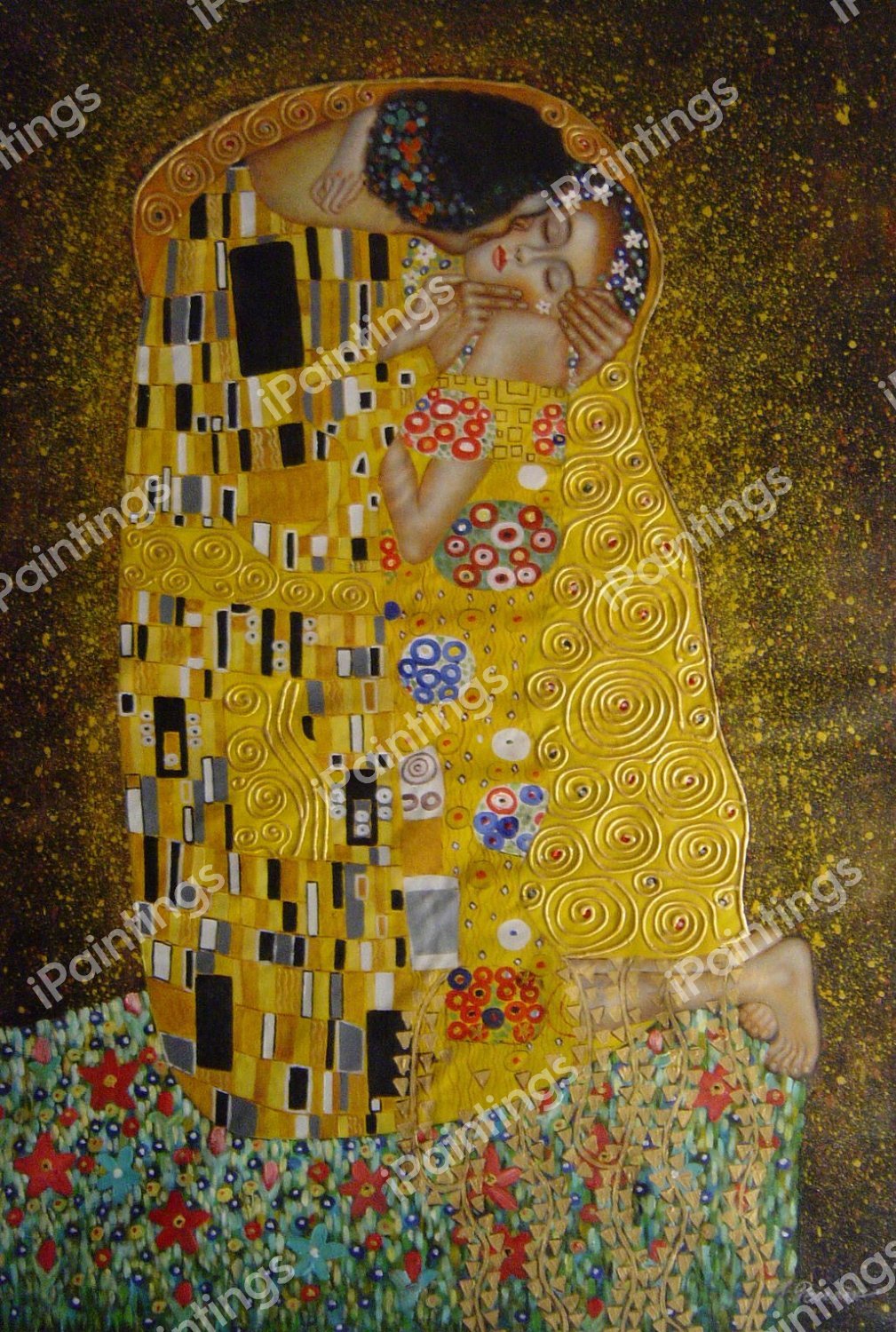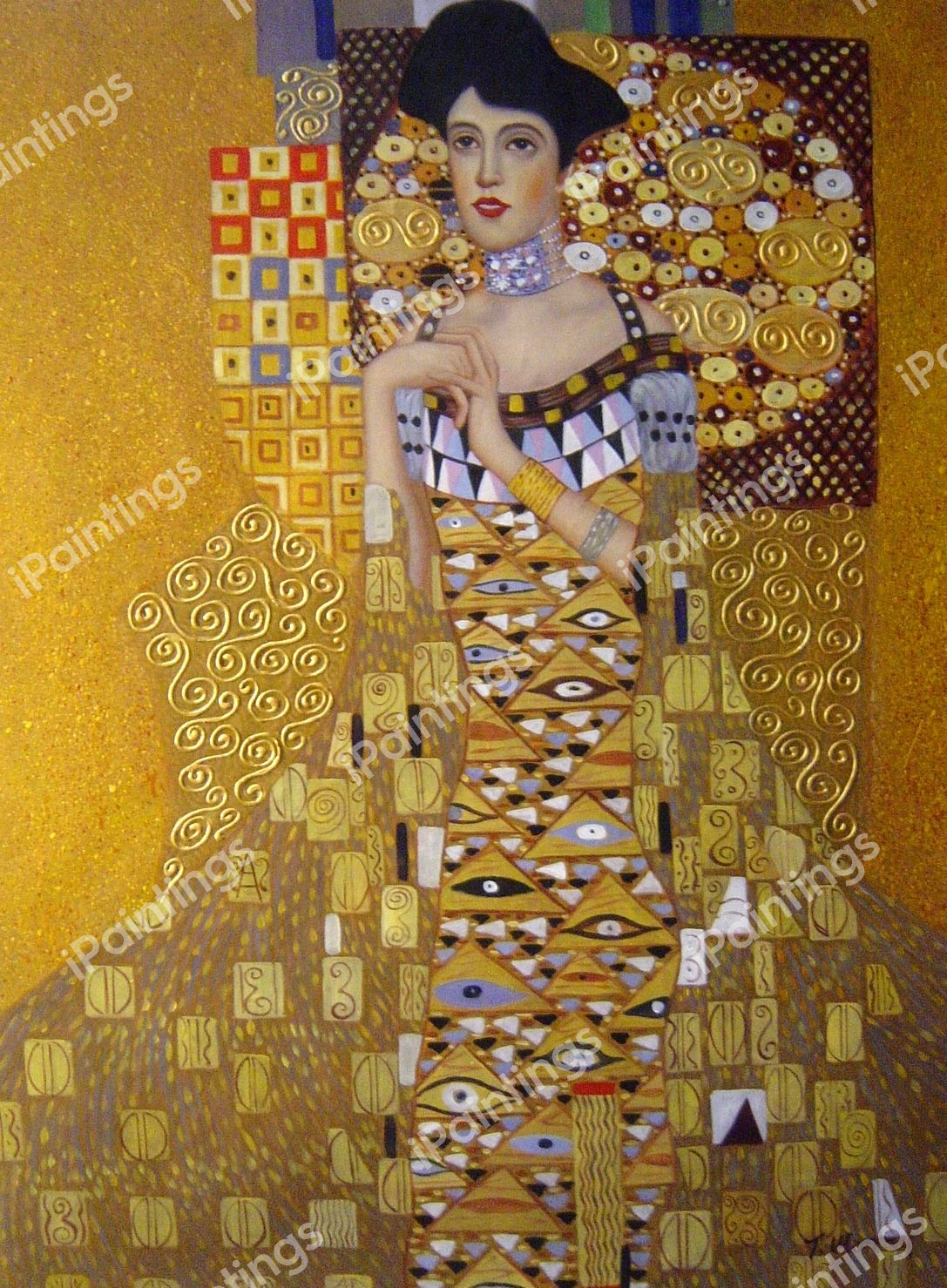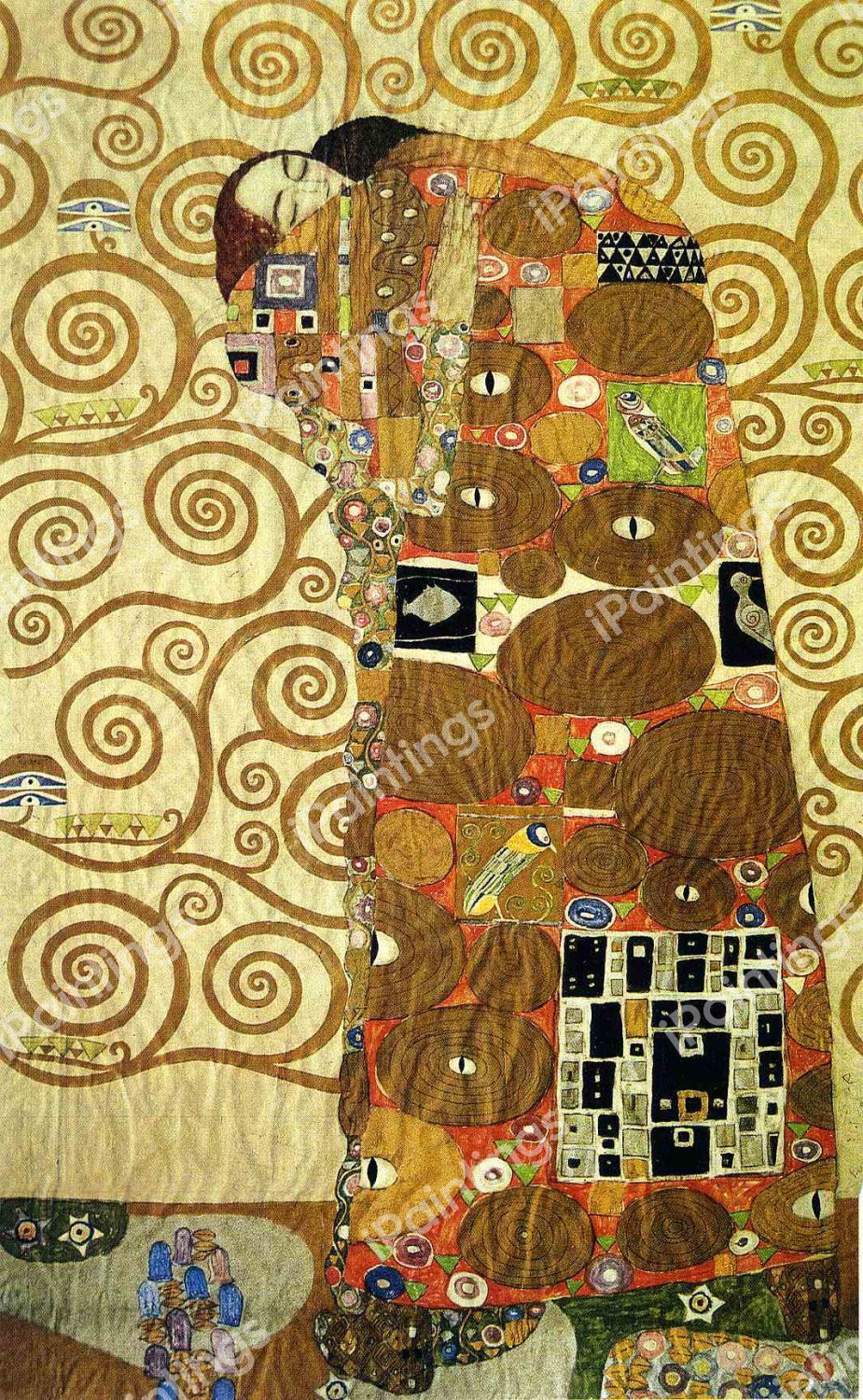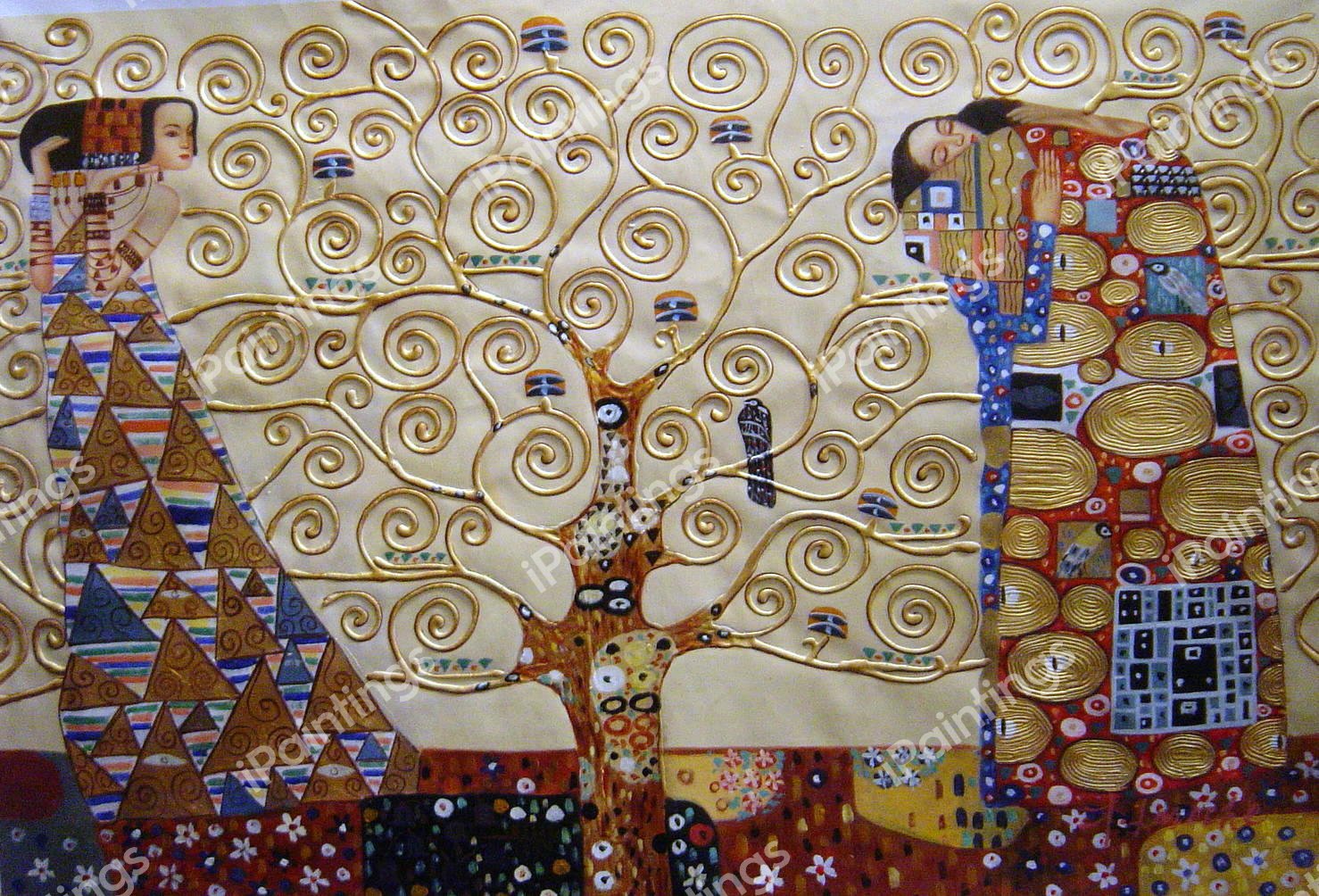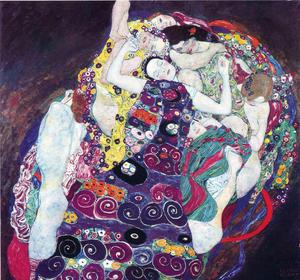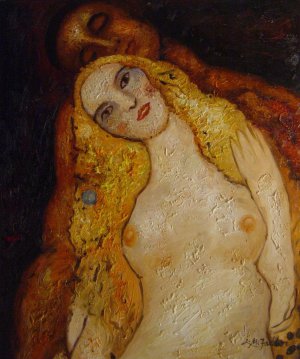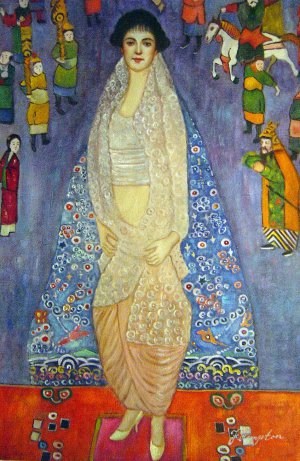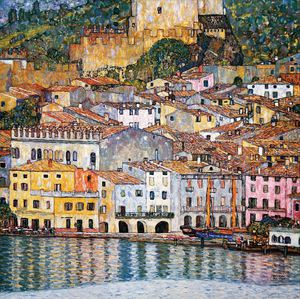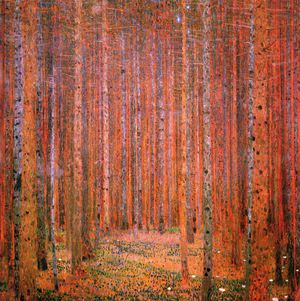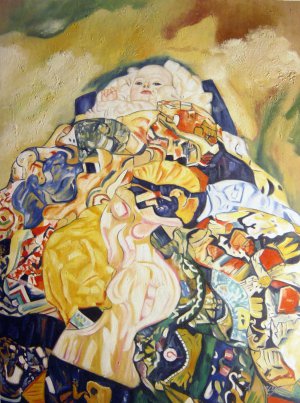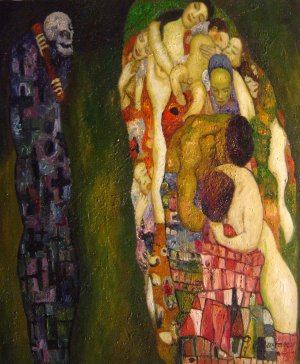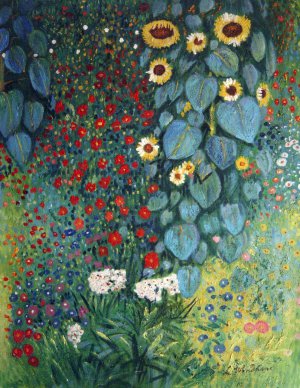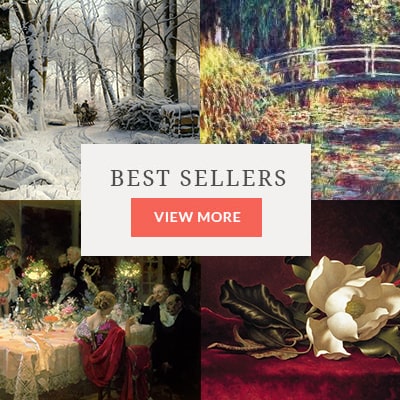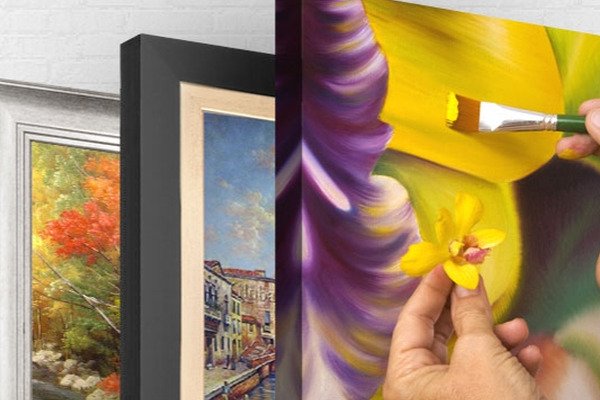- Breadcrumbs
- Blog
- Artists & Artworks
- Gustav Klimt: The Golden Advocate of Art Nouveau
Gustav Klimt: The Golden Advocate of Art Nouveau

Gustav Klimt emerged as one of the most iconic painters of Vienna's illustrious turn-of-the-century art scene. As a founding member and first president of the Vienna Secession, he helped shake the art establishment with his strikingly modern style that ushered in new directions for Austrian painting. Though branded an enfant terrible in his day for his unabashed eroticism swathed in shimmering gold, Klimt endures as the consummate advocate of Art Nouveau in Vienna and pioneer of European modernism.
While initially trained in a conservative academic tradition focused on murals and allegorical themes, Klimt revolted against historicism to forge his own highly decorative aesthetic defined by flatness, ornamentation, and vivid colors. As the nascent Art Nouveau style took hold in Europe in the 1890s, Klimt synthesized its organic forms and sinuous lines with Byzantine mosaics, Egyptian art, and Classical motifs to create singular tableaux pulsating with sensuality. Works like The Kiss with its amorous couple ensconced in resplendent gold leaf shocked viewers but announced a radically new symbolic vocabulary.
Though rife with controversy in his lifetime, Klimt's lyrical paintings foreshadowed abstraction and profoundly impacted younger modernists like Egon Schiele and Oskar Kokoschka. Despite early criticism of his unabashed eroticism, his iconic portraits and allegorical scenes now rank among the most valuable paintings to appear at auction. By the time of his death in 1918, Klimt had indelibly shifted the course of Austrian art through his sumptuous palette and unflinching visions of humanity. His ornamental landscapes of the psyche continue to beguile with their mix of vibrant color, pattern, and profound emotion suspended in a gilded neverland.
Klimt's Origins & Early Training
Born in 1862 in the outskirts of Vienna, Gustav Klimt grew up in relatively humble circumstances as the son of an engraver and goldsmith. Though the Klimt family often struggled financially, Gustav demonstrated artistic aptitude from a young age. He received a basic education at the local middle school before gaining admission at age 14 to the Vienna School of Arts and Crafts, an institution newly founded to train students in applied arts.
Under pedagogues like Ferdinand Laufberger, Klimt practiced architectural and ornamental drawing while studying historical styles and techniques. He proved so gifted that he earned a scholarship to study painting, embarking on his first public commissions in his late teens. Alongside his brother Ernst and fellow student Franz Matsch, Klimt assisted Laufberger and Vienna's leading history painter Hans Makart with mural projects in the early 1880s. Though still working within an academic tradition, these decorative programs allowed Klimt to hone technical facility and expose him to Makart’s eclectic Baroque-Rococo aesthetic.
By 1883, Klimt, Ernst, and Matsch had formed the Künstlerkompanie, a cooperative dedicated to pursuing public painting commissions that allowed the young artists to establish themselves professionally. In these early years, Klimt painted in a conventional academic style, demonstrating skill in allegory and naturalistic figure painting. But the foundations for his later originality were being laid as he immersed himself in the Viennese art world.
In 1883, Klimt along with his brother Ernst and fellow painter Franz Matsch received a commission from the Romanian royal family to create artworks for King Carol's new summer residence, Peles Castle, in the Carpathian Mountains. This commission included copying some 16th century ancestral portraits of the Hohenzollern family, painting the ceiling of the library, and executing decorative friezes and sgraffito designs. There is some debate around whether Klimt actually traveled to Peles Castle to carry out the commission or if all the works were done in his Vienna studio - the PDF argues both may be possible. In any case, this early commission in 1883 came right as Klimt was transitioning from being a student to a professional independent artist, setting up his own studio. It provided important work and exposure for the young Klimt. Though specific details on the Peles Castle paintings are limited, the commission seems to have allowed Klimt an early chance to hone his decorative painting talents on a grand scale while also copying historical works.
Klimt & the Vienna Secession
By the late 19th century, the conservative Künstlerhaus dominated Vienna's art establishment with its focus on traditional history painting. As the young Klimt was embarking on his career in the 1880s, he initially worked within this academic tradition on allegorical murals and ceiling decorations. However, as an avant-garde movement took hold across Europe, Klimt grew increasingly experimental and reactive against historicism.
In 1897, Klimt and a group of like-minded artists broke from the Künstlerhaus to form the Vienna Secession (Vereinigung Bildender Künstler Österreichs). As their first president, Klimt penned the group’s founding manifesto declaring "there is no such thing as art for art’s sake" and that "the arts lead us into a realm where no reality exists." Among 19 founding members were painters Koloman Moser and Joseph Maria Olbrich, who spearheaded the Secessionist publication Ver Sacrum (Sacred Spring) featuring art, poetry, and polemics.
The Secessionists sought to channel Vienna's glorious past into radically modern forms by blending historical references with inspiration from British Arts & Crafts, French Symbolism, and Japanese woodblock prints. Klimt synthesized these influences through his idiosyncratic application of gold leaf, mosaic-like patterns, and erotic symbolism. His 1902 Beethoven Frieze, displayed at the Secession’s 14th exhibition, caused outrage with its overtly sexual imagery foreshadowing his iconic The Kiss.
As he entered his “Golden Phase,” Klimt continued serving as the Secession’s president while pushing painting towards abstraction through his highly decorative style dissolving form into color and line. The group disbanded amidst internal strife in 1905, but its crusade against conservatism irreversibly opened the door for Viennese modernism.
The Golden Phase: Klimt's Shimmering Style
Around the turn of the century, Klimt entered his highly decorative "Golden Phase," characterized by extensive use of gold leaf and mosaic-like patterns. As he moved away from academic tradition, Klimt synthesized a dazzling array of historical styles - from Egyptian, Byzantine and Medieval art to the Italian Renaissance. Works from this period shimmer with gold backgrounds, sinuous lines, and exotic ornamentation.
Klimt's travels to Ravenna, Venice and other sites around Italy exposed him to the glittering mosaics of San Vitale and St. Mark's Basilica. The flattened perspective and frontality of Byzantine art informed paintings like The Kiss, with its gilded couple wrapped in an intricate robe decorated with emblems. Klimt also found inspiration in medieval illuminated manuscripts as well as Egyptian and Japanese artworks viewed in Vienna museums.
By incorporating such eclectic influences within his idiosyncratic style, Klimt forged radically new visions of humanity. Paintings like Judith reveal his unique brand of erotic symbolism - the biblical heroine exposes her vulva despite being clothed in mesmerizing gold patterns. Such provocative yet sumptuous tableaux announced Klimt's total rupture from the Ringstraße generation. Where they venerated Classical ideals, Klimt exalted the sensual, ornamental and exotic. His lavish surfaces dazzle the eye but frequently mask disturbing subjects, as in Death and Life featuring a grinning skull.
Shocked critics decried Klimt's "pornographic" tendencies, yet the public enthusiastically attended his exhibitions. With patrons like the wealthy Bloch-Bauer family, he secured fame and financial success that supported his relentless experimentation throughout his golden phase. The luminous beauty of paintings like The Kiss endures as Klimt's most iconic achievement.
Klimt's Art
While Klimt gained fame in Vienna for his allegorical paintings and public mural projects, he also left an indelible mark through his striking approach to portraiture. As with his other works, his portraits reveal a unique ability to fuse tradition with modernity.
Klimt's early society portraits, such as his acclaimed depiction of Sonja Knips, adhere to a relatively realistic, if stylized, approach recalling old master works. The influence of Whistler and English Aestheticism is apparent in these early efforts featuring flattened forms and decorative backgrounds. Yet before long, Klimt veered into more abstract and psychologically charged territory.
His later portraits exemplify his "Golden Style," enveloping sitters in gold leaf and abstract patterns. By obscuring facial features and individuality, Klimt sought to unveil a more essential, symbolic representation of his subjects. Though sometimes seen as impenetrable or even unflattering by his contemporaries, these portraits radiate mystery and reveal Klimt's interest in revealing hidden depths.
Works like his Portrait of Adele Bloch-Bauer I caused controversy through their provocative sensuality and disregard for realism. Yet the otherworldly beauty and striking ornamentation of these portraits also made Klimt greatly sought-after among Vienna's elite as a society portraitist. His iconic depictions remain among the most valuable paintings to ever sell at auction, a testament to Klimt's lasting allure.
Gustav Klimt's most famous "Golden Phase" paintings
- Dimensions: 180 x 180 cm
- Oil and gold leaf on canvas
- Depicts a couple embracing, wrapped in elaborate robes decorated in Klimt's distinctive gilded style
- Considered a masterpiece of Vienna Secession/Art Nouveau
- Employs gold leaf, mosaic-like patterns, sinuous lines characteristic of Klimt's "Golden Style"
Portrait of Adele Bloch-Bauer I (1907)
- Dimensions: 138 x 138 cm
- Oil, silver, and gold on canvas
- Regarded as pinnacle of Klimt's portrait art, commissioned by Adele's husband Ferdinand Bloch-Bauer
- Adele's face and dress contain over 100 pieces of gold leaf
- Ethereal quality, mixes ornamentation and realism
Cartoon/Design for the Stoclet Frieze (1905-1909)
- Chalk, white gouache on brown paper
- Created as a full-scale preparatory design for the Stoclet Frieze
- Depicts abstract, mosaic-like figurative elements representative of Klimt's late Golden Style
- Dimensions: 88 x 69 cm
- Oil on canvas
- Features symbolic tree with circular motifs and human figures, characteristic of Klimt's decorative approach
- Golden background with contrasting blues/greens in tree
These are some of Klimt's most renowned "Golden Phase" works that used gold leaf, ornamentation and symbolic content to create striking, modernist tableaux. Many consider them masterpieces of Art Nouveau.
The Timelessness of Klimt
Though undervalued during his lifetime, Klimt's analytical approach to realizing sensations on the canvas proved profoundly influential for successive avant-garde movements. His fragmented planes and faceted brushwork foreshadowed the fracturing of form seen in Cubism and Abstract art. The Fauves, meaning "wild beasts," took inspiration from the vivid hues and liberated use of color pioneered by Klimt.
As attested by their effusive praise, Klimt attained an almost god-like status among the trailblazing modernists who drove art towards abstraction. Picasso, Braque, Matisse, and others made pilgrimages to retrospectives of his work, studying the geometric deconstructions that reduced landscapes and figures to essentials of color and shape. Picasso went so far as to purchase the land containing Mont Sainte-Victoire, while Matisse called Klimt "the father of us all".
Appreciation for Klimt's works continues today, with his paintings achieving record prices at auction. His Card Players sold in 2011 for over $250 million dollars, one of the highest sums ever paid for art. Museums like MoMA and the National Gallery of Art have entire collections dedicated to Klimt. Scholarship on the father of modern art also continues to develop our understanding of how his radical perspective fundamentally altered the course of art.
What Makes Klimt Impossible to Forget
Over a century after his death, Gustav Klimt's striking paintings and sensual aesthetic remain remarkably compelling to modern audiences. His works stand out for their dazzling surfaces, bejeweled with gold leaf and shimmering ornamentation. Yet beneath the sumptuousness lies a complex symbolism that conveys universal themes of love, death, anxiety, and regeneration.
In an age when abstraction was still in its infancy, Klimt ventured into uncharted territory by dissolving naturalistic form into colors, patterns, and textures. His disregard for convention matched the rebellious spirit of the Vienna Secession. Though branded an enfant terrible in his day, his pioneering style foreshadowed movements like Expressionism and Abstract art.
The fascination exerted by Klimt's paintings also owes much to their palpable eroticism. His unabashed celebration of sexuality in works like The Kiss and Judith shocked Viennese society but introduced a radically modern sensibility. The tension between lavish surface beauty and disturbing psychological themes makes his work still feel strikingly contemporary.
Reaching record-setting prices at auction, Klimt's iconic portraits and allegorical scenes now rank among the world's most valuable paintings. Their popularity affirms his role in ushering avant-garde ideas into the mainstream. More than a leading figure of Viennese modernism, Klimt endures as one of the most influential painters of all time. His iridescent visions continue to seduce viewers while pushing the boundaries of artistic possibility.




